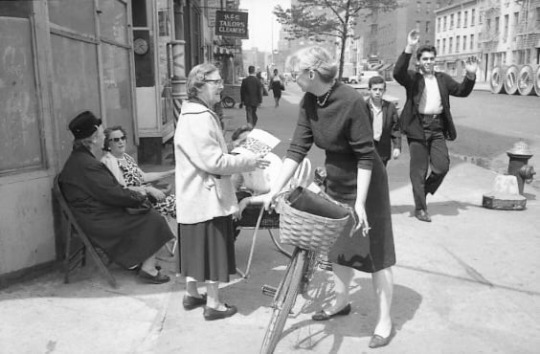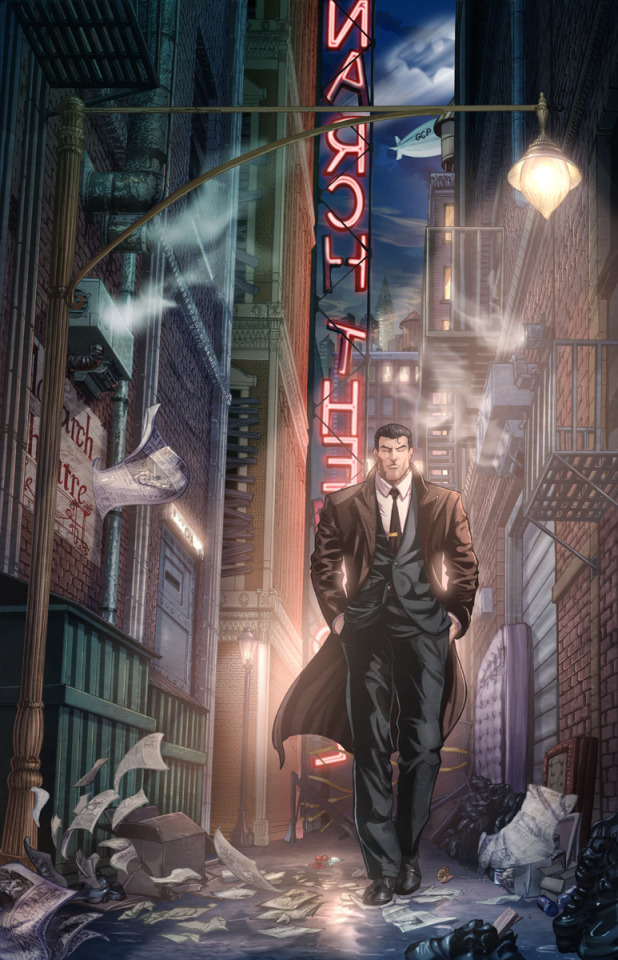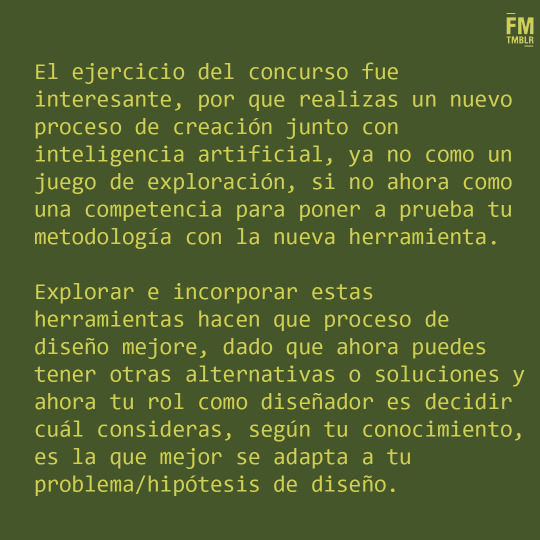#Jane Jacobs
Explore tagged Tumblr posts
Text
youtube
My latest essay is about city building games! I cover 6 different games, discussing resource allocation, district usage, and the ways people shape the place they live!
Transcript here.
Games discussed include:
City Planning Department by Kaelan Doyle-Myerscough, Andrew Tran, Alex Dawson, William Wu, Paul Geldart, and Raul Altosaar
The Quiet Year by Avery Alder
Ex Novo by Martin Nerurkar and Konstantinos Dimopoulos
We, the City by Teo Kai Xiang
I Went to Bourbon, Indiana Once by Beth Jackson
Tales of a City by Hessan Yongdi
#city planning department#the quiet year#ex novo#we the city#i went to bourbon indiana once#tales of a city#jane jacobs#the death and life of great american cities#Youtube
111 notes
·
View notes
Text
I often think about the 2004 book Dark Age Ahead by Jane Jacobs and how painfully prescient the title was and is.
8 notes
·
View notes
Text

Jane Jacobs, dans son essai des années 1960 « Cycliste », prévoyait la montée de la culture automobile et ses effets néfastes sur les milieux urbains. Jacobs, critique de la dépendance automobile fut alertée sur les tendances sociopathes qu'elle favorise.
Malgré cela, elle est restée une cycliste dévouée et défenseure de l'urbanisme durable.
Son livre phare, The Death and Life of Great American Cities, a souligné le besoin d'espaces urbains variés, denses et mixtes. Les théories économiques de Jacobs reconnaissent le rôle de la bicyclette dans l'innovation.
Son héritage dans l'activisme urbain et la défense du cyclisme continue d'influer sur l'urbanisme et le transport durables.
4 notes
·
View notes
Text
Cities have the capability of providing something for everybody, only because, and only when, they are created by everybody.
Jane Jacobs, The Death and Life of Great American Cities
10 notes
·
View notes
Link
There is an underlying assumption that each of us aspires to be as productive as possible, and that stripping away everything seen to interfere with productivity is a good thing. This was the pitch made by many new companies in the 1990s, when online shopping and other digital financial transactions first became a big deal. The shift has reshaped cityscapes as well as psyches. The American Booksellers Association reported that in 2021 alone, ‘the movement of dollars to Amazon and away from retailers displaced 136,000 shops occupying 1.1 billion square feet of traditional commercial space.’ That’s a lot of local jobs and relationships both to places and people.
The small independent businesses that we’re losing sold goods, but they also gave away for free all sorts of things that are less tangible. There might be cheaper ways to buy shampoo or a better selection of envelopes online, but at an in-person store you can have a social interaction, even build a relationship with the proprietor and chat with other customers, or run into a friend or neighbour. That may happen in big chains such as Starbucks – but the employees aren’t likely to be around for long, the profit doesn’t go back into the community and the design of the place is generic, not reflecting its environment.
The San Francisco of my youth was full of small shops whose friendly eccentricity felt like part of the place. Some of them still exist but they’re rarer now. Many had old photographs of the business or the neighbourhood, some had artefacts of the past or pieces of the owner’s art. The little liquor and grocery store in my old neighbourhood had a wall of pictures of locals attending its annual barbecue and a ledger in which the proprietor recorded transactions with elderly locals who bought their groceries on credit and paid up at the end of the month. The exchanges between people who knew one another were non-commodities these small businesses offered along with whatever was for sale.
In her urbanist manifesto The Death and Life of Great American Cities (1961), Jane Jacobs wrote about ‘eyes on the street’: about the way that pedestrian traffic, people moving around – or sitting around – in public, kept a place safe and more than safe: convivial, gregarious. I think of what has come to my city as ‘the great withdrawal’. People on the street often seem to have their eyes elsewhere, usually on their phones: they might video a crime, but they might also not notice it’s happening. Many seem to flinch at direct contact with strangers or pretend the apparent intrusion didn’t happen, so I’ve come to avoid the tiny interactions that seem much more welcome in New Orleans, even in New York City.
After a childhood nearby, I moved to San Francisco in 1980 when street life and bar life were vibrant, but cafés were rare outside North Beach’s Italian neighbourhood. They proliferated in the 1980s and 1990s as places to hang out, maybe read, maybe chat to whomever was around or just people-watch. In this millennium, in cafés frequented by young white people, every customer seems to be silently staring at an Apple product, so that the places look and feel like offices. Even this phase may be on the way out. The next phase – of trying to keep customers from sticking around – has arrived. A food industry magazine published a story in April last year with the headline ‘In 2023, San Francisco Coffee Shops Want You to Get the Hell Out. The Vibe Is to Leave. Like Right Now,’ explaining that cafés were removing tables and chairs and focusing exclusively on take-away products, in part because cafés were being used as free office space. Cultural, social and religious institutions have been displaced or run aground, film festivals and art centres have left the city, historic businesses, including the oldest Black-owned bookstore in the US, have been evicted, all while wealth continues to concentrate at the fastest rate ever seen.
____________________
I know this is a crazy-long excerpt to expect people to read, but the article is maybe 5x as long and it’s just a brilliant essay on how San Francisco -- and US cities in general -- are basically under attack by people who want to buy up all the property and tell everyone else how to live while at the same time they do everything in their power to avoid having any interaction with any humans who live in those same cities.
Highly recommend reading the whole thing.
19 notes
·
View notes
Text
Batman is the product of bad street design

image: Vest on DeviantArt
If there were overlooking balconies and windows to provide eyes on the street, Crime Alley wouldn’t be “Crime Alley,” and Joe Chill would not have a place to rob people.
I mean in every depiction of Gotham other than the 1966 TV show, it’s portrayed like every American city that decided to raze the old main streets, put highways right through downtown, let industries move overseas, let the waterfront rot, has a weird Kowloon Walled City type slum in the middle?? permits industries to cloud the air with coal smoke (I mean, it’s dark DURING THE DAYTIME so what else could that be), let huge chains decimate local commerce…
If they had only read Jane Jacobs!
A good bit of analysis comparing Gotham to Metropolis posits Batman as Machiavelli’s Prince, ruling by fear but setting a moral standard in a city that was corrupt but “free,” and Superman as a Modernist, with Metropolis as Thomas More’s Utopia; an exemplar of civic improvement who helps make Metropolis, and in turn its citizens, better, by sweeping away the old.
One of the earliest stories Jerry Siegel and Joe Schuster, the creators of Superman, wrote about the Man of Steel, was a story in which Superman confronted juvenile delinquency by tearing down the slums where the troubled youth lived so authorities would be forced to build “decent public housing.” In Batman's Gotham, human-nature makes the city a bad place. In Superman's Metropolis, exactly like More's Utopia, it is the city that makes people bad, and it needs to be physically reordered for it to be a "good place" and for "the rude and uncivilized inhabitants" to be brought to "that measure of politeness." Superman isn't just any sort of utopian; he's a Modernist.
The "Superman in the Slums" story appeared in 1939, the same year that New York World's Fair opened, celebrating the theme of the World of Tomorrow. DC comic would print special editions comics featuring Superman for the Fair and even sponsored a Superman Day. One of the Fair's organizers' and the man who embodied the vision of housing projects and superhighways that would "displace outmoded business sections and undesired slum areas" was the Modernist urban planner Robert Moses. Slum clearance was the heroic utopian labor of the day, and he was the man responsible for bulldozing more acreage of "slum" housing then any other.
15 notes
·
View notes
Text
Jacobs’s analysis is notable for its attention to the microsociology of public order. The agents of this order are all nonspecialists whose main business is something else. There are no formal public or voluntary organizations of urban order here— no police, no private guards or neighbourhood watch, no formal meetings or officeholders. Instead, the order is embedded in the logic of daily practice. What’s more, Jacobs argues, the formal public institutions of order function successfully only when they are undergirded by this rich, informal public life. An urban space where the police are the sole agents of order is a very dangerous place. Jacobs admits that each of the small exchanges of informal public life— nodding hello, admiring a newborn baby, asking where someone’s nice pears come from — can be seen as trivial. “But the sum is not trivial at all,” she insists. “The sum of each casual, public contact at a local level— most of it fortuitous, most of it associated with errands, all of it metered by the person concerned and not thrust upon him by anyone— is a feeling for the public identity of people, a web of public respect and trust, and a resource in time of personal or neighbourhood need. The absence of this trust is a disaster to a city street. Its cultivation cannot be institutionalized. And above all, it implies no private commitments.” Where Le Corbusier began with formal, architectural order from above, Jacobs begins with informal, social order from below.
James C. Scott, Seeing Like a State
33 notes
·
View notes
Text



what they don't tell you about living in toronto is that you can just go look at jane jacobs' house
3 notes
·
View notes
Text









¡Emocionado de compartir que mi imagen ha sido destacada por el jurado en el concurso de arquitectura!
"Generative Futures: An AI + Architecture Storytelling Challenge" organizado por Archinect
El reto de este concurso fue abordar cómo la inteligencia artificial está cambiando nuestra percepción del diseño arquitectónico y el entorno construido. Fue un desafío fascinante, pero también una oportunidad para reflexionar sobre cómo la tecnología está transformando nuestra profesión. fmtmblr
En las imágenes les muestro parte de la entrega y del proceso
🎉 Excited to share that my image has been highlighted by the jury in the architecture competition! 🎉 "Generative Futures: An AI + Architecture Storytelling Challenge" organized by Archinect. The challenge of this competition was to address how artificial intelligence is changing our perception of architectural design and the built environment. It was a fascinating challenge but also an opportunity to reflect on how technology is transforming our profession.
In the pictures, I show them part of the delivery and the process.
17 notes
·
View notes
Text
Exploring Granville Island; a Vancouver Tourist Destination
May 29, 2025 Granville Island is a vibrant thirty-five-acre urban district located under the Burrard Bridge in Vancouver. Due to limited parking, we chose to take an Uber to get there. Granville Island is the most visited tourist destination in Canada after Niagara Falls, attracting over ten million visitors each year. The sandbar that is now Granville Island was a traditional fishing site for…

View On WordPress
#arts#British Columbia#canada#food#Granville Island#Jane Jacobs#markets#travel#urban redevelopment#vancouver
0 notes
Text
We could have this if we built walkable cities
All kinds of shit is always happening to Sailor Moon in broad daylight on the sidewalk
5K notes
·
View notes
Text
Ugh. Some premises for new James Bond movies in the new Amazon controlled 007 universe:
An evil union organizer is taking his crazy plan for labor rights so far that he’s going to destroy the world economy unless James Bond can stop him. In the very end of the movie bond acknowledges that labor rights need to be reformed, but doesn’t make any effort to actually provide any of those reforms. 
A well-meaning muckraker (the so-called villain inspired by a nefarious villain version of Jane Jacobs, because I get a sense that Jeff Bezos has a Boner for Robert Moses.) ANYWAY.. she has managed to con some naïve, well-intentioned progressive politicians into backing restricted working hours. Workers are complaining that they want to be able to work 150 hours a week for minimum wage but they can’t. Society is grinding to a halt and children are dying because they can’t purchase enough Basic necessities, because the employees aren’t allowed to work to make them. It turns out that it’s a nefarious foreign agent, trying to bring the country to its knees, and only 007 can stop him. (The evil mastermind would obviously be a man because in the James Bond universe, women are rarely thought of as intelligent enough to be evil masterminds. God forbid women do anything, etc.)
I could take these further, but I really get the sense that the writer that Jeff Bezos likes more than anyone is probably Ayn Rand and that lady makes me sick. Feel free to reblog and add more premises for Jeff Bezos approved 007 movies. 
0 notes
Text










Jane’s Walk fundraising in downtown Windsor. I led a walk about architecture and urbanism in the city to raise funds for the larger festival in the spring.
0 notes
Text
When an area of a city lacks a sidewalk life, the people of the place must enlarge their private lives if they are to have anything approaching equivalent contact with their neighbors. They must settle for some form of “togetherness,” in which more is shared with one another than in the life of the sidewalks, or else they must settle for lack of contact. In the case of the first outcome, where people do share much, they become exceedingly choosy as to who their neighbors are, or with whom they associate at all. The more common outcome in cities, where people are faced with the choice of sharing much or nothing, is nothing. In city areas that lack a natural and casual public life, it is common for residents to isolate themselves from each other to a fantastic degree.
Jane Jacobs, The Death and Life of Great American Cities
8 notes
·
View notes
Text
Event: Jane's Walk with Cities Reimagined in Downtown Detroit
WHEN: Wednesday, June 5th at 4:30PM WHERE: Andiamo Detroit Riverfront, 400 Renaissance Center WHAT: Join a fun and informative walk through the city with Cities Reimagined and Detroit native Kelsey Hubbell. This walk is a great opportunity to explore Detroit through the lens of urbanist hero Jane Jacobs, and learn about how we can make our cities better places to live. Whether you’re an urban…

View On WordPress
#2024#Cities Reimagined#Detroit#downtown#event#geography#Jane Jacobs#Jane’s Walk#Kelsey Hubbell#urbanism#walk
0 notes
